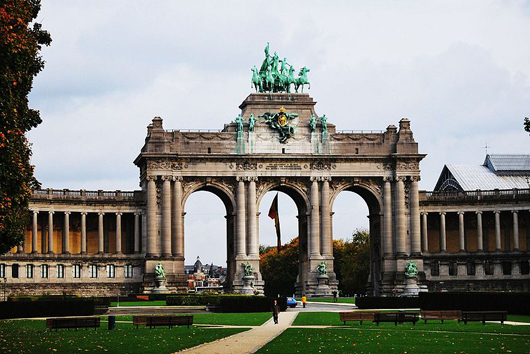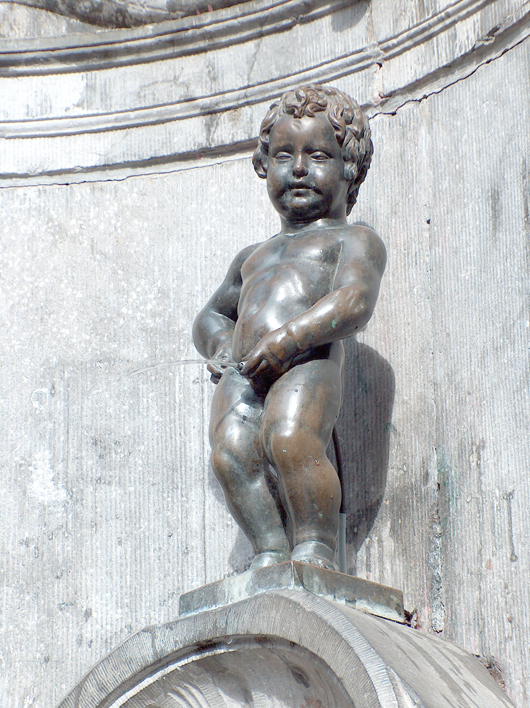
BRUSSELS (AP) – As the host city for many European Union institutions and their well-heeled Eurocrats, Brussels may not sound like the best destination for travelers on the cheap. A plate of mussels, a local specialty, can set you back nearly $30 (20 euros).
But with a little creativity, you can enjoy Brussels’ pleasures on a budget – from free chocolate samples and cheap waffles to the spectacular Grand-Place.
GETTING THERE: Skip Europe’s biggest transport scam: the $77 (55 euro) airport-to-downtown cab ride lasting barely 30 minutes. Take the 20-minute train ride for $4.20 (3 euros) – $2.70 (1.90 euro for under age 12) – to the central station. From there, subways, buses and streetcars go everywhere.
GETTING AROUND: From downtown, you can get to most sights and an infinite number of cafes, restaurants and bars on foot. Public transport is cheap. A one or three-day pass costs $6.30 (4.50 euros) and $13.20 (9.50 euros) respectively. A 10-trip pass costs $17.10 (12.30 euros).
You can also not pay, like many Bruxellois, but you risk a $70 (50 euro) fine.
WHERE TO STAY: There are budget hotels and hostels near the city center. Youth Hostel Jacques Brel – http://tinyurl.com/lh5wca – starting at $23 (16.40 euros) a night, and 2GO4 Quality Hostel – http://www.2go4.be/quality/ – starting at around $28 (20 euros) a night, are worth looking into.
PARKS, LANDMARKS AND MARKETS: Brussels’ top tourist attraction is free: The Grand-Place, a spectacular square in the historic center of the city. It is known for the ornate architecture of its centuries-old buildings, including City Hall and former guild houses for skilled professions like brewers, bakers and butchers. The square is beautifully lit at night, and every other year its center is lined with a carpet of flowers mid-August for three days. The next flower carpet will be laid in 2010.
Manneken Pis, Brussels’ famed small statue of a naked little boy, pees into his fountain just off the Grand-Place. He is sometimes dressed up in one of the hundreds of outfits he has been given over the years. There is a female and a canine version – Jeanneke Pis and Zinneke Pis – nearby.
Beware the expensive, touristy shops around the Grand-Place. For a more authentic, less expensive way to sample Belgian goods, there are daily and weekend markets. Rummage around the daily flea market in the Marolles neighborhood. Sundays, there is a big market around the Midi railway station and on Place Flagey.
With more than 2,900 acres of parks, Brussels is a very green city. Don’t miss the park on the Place du Petit Sablon, with its numerous statues, or the Parc de Laeken, with the royal castle.
For a beautiful bird’s-eye view of the Belgian capital, go to the top of the Museum of Musical Instruments, at rue Montagne de la Cour 2. Admission is $7 or $5.60 for students (5 or 4 euros).
For concerts and other entertainment, check the free magazine Agenda, available in subway stations and pubs, or visit http://www.agenda.be/v2/fr.html.
MUSEUMS AND CHURCHES: It can rain in Brussels. And rain! But more than three dozen museums and historic churches provide for ample indoor activities.
Use the Brussels Card that covers public transport and entrance to museums only if you plan to visit more than four or five museums, or are older than 25. Most museums cost only a few dollars (euros) for visitors under 25, making the $28 to $46 (20 to 30 euro) card pricey.
One of Belgium’s newest attractions, the Rene Magritte Museum, located in the house at Rue Esseghem 135 where the famed surrealist painter worked for 24 years. Entry is $7 (5 euros) for visitors age 23 and under. Access to the Royal Museum of the Armed Forces and Military History is free year-round. Many other museums are free after 1 p.m. on the first Wednesday of the month.
Entrance to churches is free, but hours are more limited than in museums. Eglise Notre Dame de la Chapelle, the city’s oldest, located on the Place de la Chapelle, was built in the 13th century. Art in the 225-year-old Eglise St-Jacques sur Coudenberg, on the Place Royale, is also worth a visit.
CHEAP EATS: Brussels is rightly famous for french fries, waffles and mussels _ frites, gauffres and moules in French. If on a budget, stick to the first two. Moules can cost $28 (20 euros) a plate.
Frites are sold at grease emporiums known as friteries. Check out Chez Martin on Place St. Josse, near the Madou subway stop, or Maison Antoine on Place Jourdan, near the EU headquarters, which is open into the wee hours.
Waffles are on sale everywhere for $2.10 (1.50 euros) and up. They come smothered with whipped cream, sugar, fruit or – what else? – chocolate sauce.
For a cheap, filling meal try shawarmas (also called gyros or pita sandwiches), priced at $4.20 to $5.60 (3 or 4 euros). The place to go: Rue du Lombard, off of Grand-Place, has numerous pita restaurants.
BARS: There are pubs and cafes all over town vending scores of different kinds of beers – blond or dark and always foamy. The St. Catherine and St. Gery neighborhoods have un-touristy bars, such as Zebra, Walvis, Greenwich and Monk. The bars on the Grand-Place are touristy and pricey. But just around the corner, Delirium holds the Guinness World Record for the most types of beer in one bar (2,004), and the former brothel, Goupil le Fol, offers unique fruit wines. Beers and wines are usually $2.80 to $5.60 (2 to 4 euros) per glass; cocktails are double that price.
DAY TRIPS: In less than an hour by train, visitors can travel from Brussels to Bruges, Antwerp, Ghent or Liege.
DOS AND DON’TS:
Do ask for free samples in the chocolate shops. When you’ve gone to each one, you won’t need to buy any. Do go to chocolate factories for discounted prices. Neuhaus and Leonidas both have factories just outside of Brussels.
Don’t rent a bike. The rental system was recently overhauled, but it still does not work well. You can actually be arrested for riding a bike out of one district into another.
Don’t eat in the Grand-Place. It is a spectacular place to see, but for eating and drinking, move to more authentic, cheaper eateries nearby.
Copyright 2009 Associated Press. All rights reserved. This material may not be published, broadcast, rewritten, or redistributed.
AP-ES-07-13-09 1211EDT
ADDITIONAL BRUSSELS IMAGES OF NOTE




